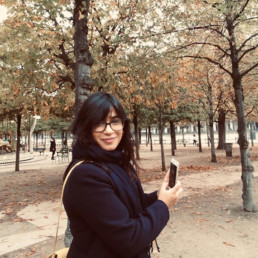
Written by Hana Malik
Hana Malik is currently an Associate Senior Leader, Head of English with a passion for social justice, diversity and equity.
We decided, after the murder of George Floyd in the US, that we wanted our educational organisation to join the movement against racism and we turned our school towards the necessary work it took to be anti-racist. Now, two years on, I find myself asking where we are and what we’ve achieved, if we’ve made any positive changes to the lives of our staff and students and if our DEI work has moved us forward.
We have heard it before, and it is key to achieving success: DEI work is circular – it is evolving and the work is never ‘done’. It is vital therefore to reflect on progress and ensure the evolutions keep happening.
Ella Washington, an organisational psychologist and founder and CEO of Elevate Solutions (a DEI strategy firm), helps to clarify the ‘five stages of DEI maturity’ and how we might evaluate the work we are doing. The five stages are: aware, compliant, tactical, integrated and sustainable. She explains this in her upcoming book as well as for the Harvard Business Review: https://hbr.org/2022/11/the-five-stages-of-dei-maturity She has also spoken about the three Ps of DEI evaluation.
Purpose
The most important place to begin is with the why, especially because there is (not yet anyway) no standard of DEI in an educational setting against which you can measure your organisation. No teacher standards (although meeting the needs of learners is often cited as DEI adjacent) and certainly no Ofsted criteria under Quality of Education or Personal Development. I consider our school and think about where we were in 2020. Why did we join the movement? Did everyone know where we were going and why we were going there? Did everyone feel safe in joining the journey?
There were great successes in this area, especially in 2020 and 2021. Now however I must admit that our commitment to DEI has become something of an ‘extra’ improvement priority. Not because we don’t believe in DEI, but because, like all schools, the reality of exams, Ofsted, sky-high bills, mean that we are juggling countless balls and it has been hard to hold on firmly to the DEI one. Most important perhaps is the question of whether our why has changed and if as leaders we can be courageous enough to acknowledge that and realign the vision.
Pitfalls
This can be difficult, but honest reflections and consideration of barriers and pitfalls will contribute to successful and sustained DEI work. Were leaders vulnerable and open about why we’d started this journey thereafter building confidence and trust in the staff body? Did staff have a secure and shared language about DEI? Were changes manageable and sustained?
We’ve fallen into some predictable pitfalls. The one that is arguably most challenging is that we have stopped communicating our vision and goals for DEI. Is it still on our school improvement plan? Yes. Do we all know why it’s there and what change might entail? No. Secondly, the work of DEI cannot fall to one person. A DEI champion is great, but what happens when they leave? We know how important middle leaders are in delivering change, and it is in that room we can ensure that DEI is sustained.
Progress
The all-important ‘this is progress’ stage. The curriculum, the outcomes, the senior leadership team. We want to see progress across all elements of our organisation. So, what does progress look like? What does it look like in the short term and the long term? How can we find out where we are now and where we need to go next?
We do have a more diverse and representative SLT. We do have a more inclusive recruitment process from blind CVs to diverse panels. Our students do learn about a wide range of topics; from kabaddi in PE to reframing migration. There are boxes we can tick now, that is true. But we know our work is far from ‘done’. We will need to return to the question of what progress looks like for us and go from there. If schools are microcosms of the society we live in, we need to think carefully about what DEI in a socially just and equitable world looks like. We can then build the change we want to see.

